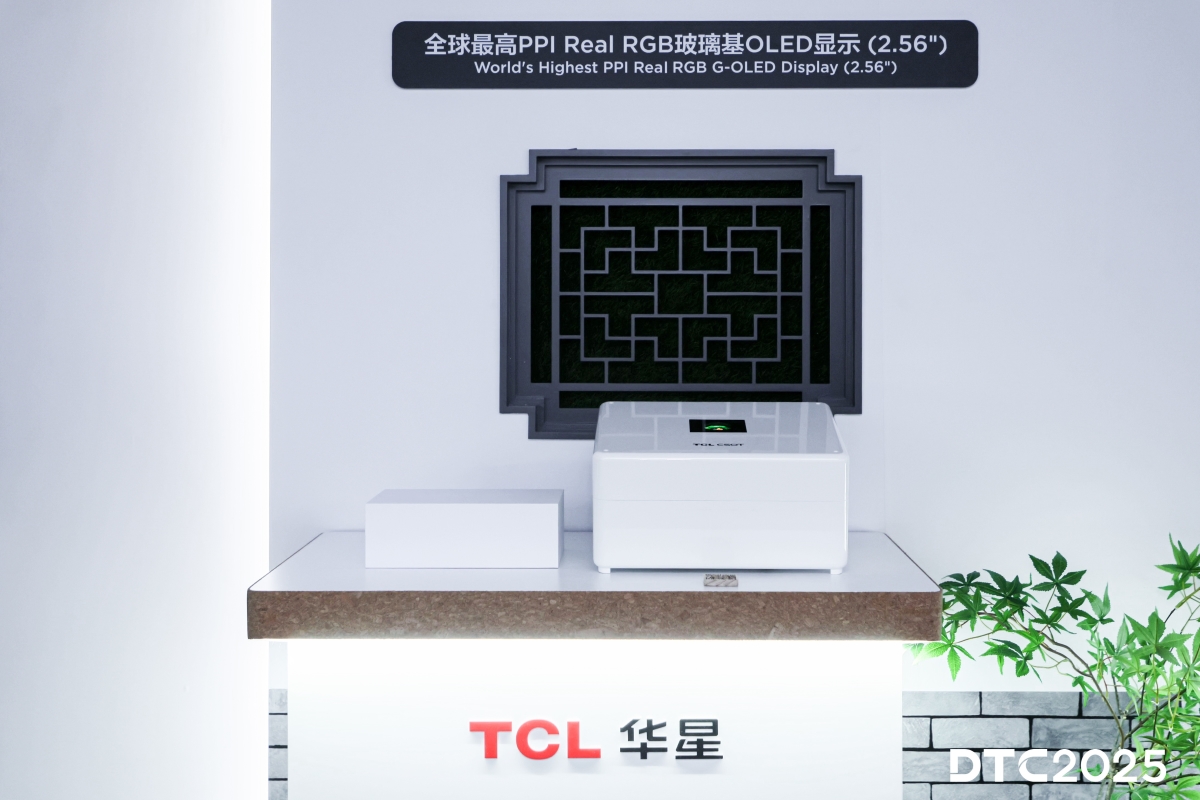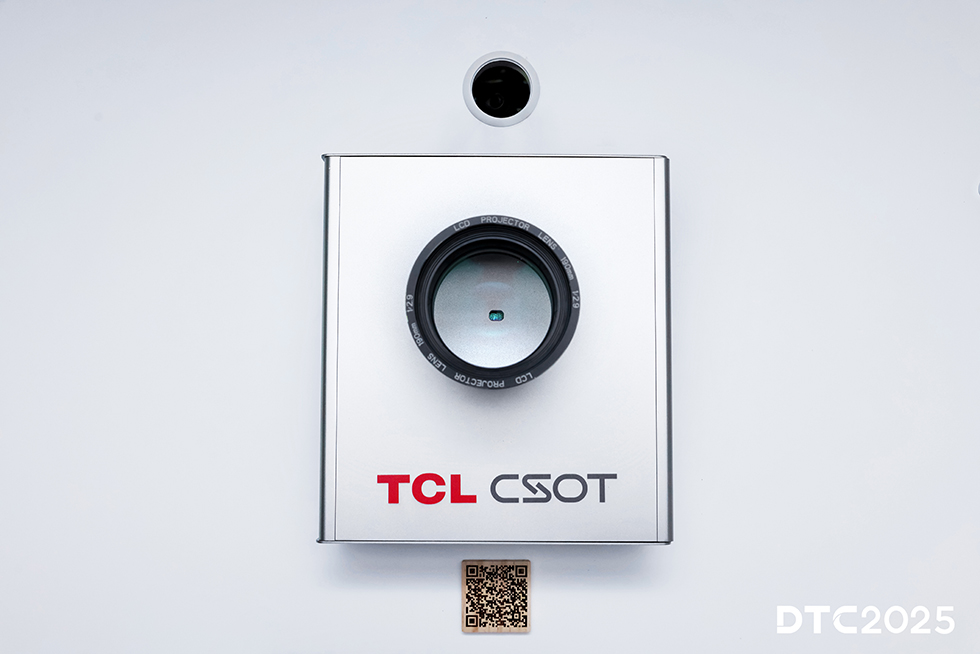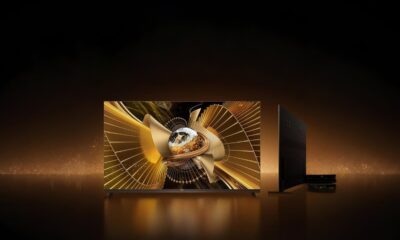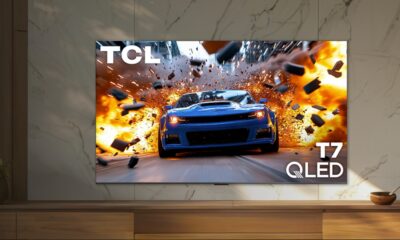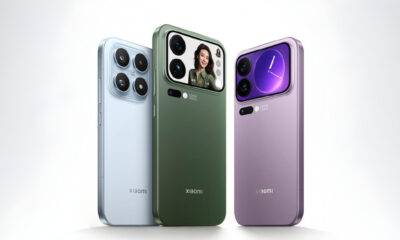News
TCL CSOT showcases printed OLED, Micro LED, MLED, and tri-fold displays at DTC2025

TCL CSOT showcased a sweeping lineup of advanced display technologies at its DTC2025 conference, highlighting major progress in printed OLED, Micro LED, and MLED development. The company unveiled the world’s first 5.65-inch Real Stripe RGB OLED smartphone panel manufactured using inkjet printing. It achieves 390 PPI with a visual sharpness equivalent to 490 PPI, signaling a new chapter for small-size OLED production.

The printed OLED breakthrough is part of a broader shift toward sustainable manufacturing. TCL CSOT’s t12 G5.5 production line saves up to 400 million kilowatt-hours of electricity annually by minimizing vacuum processing. Construction is already underway for the t8 G8.6 line, the world’s first mass-production facility dedicated to printed OLED, with plans to support displays for monitors, tablets, and laptops.
TCL showcased several additional OLED innovations, including a 2.56-inch Real RGB OLED panel with 1,512 PPI for XR devices and a 13.2-inch tablet OLED with partitioned frequency control that lets different screen zones run at independent refresh rates.
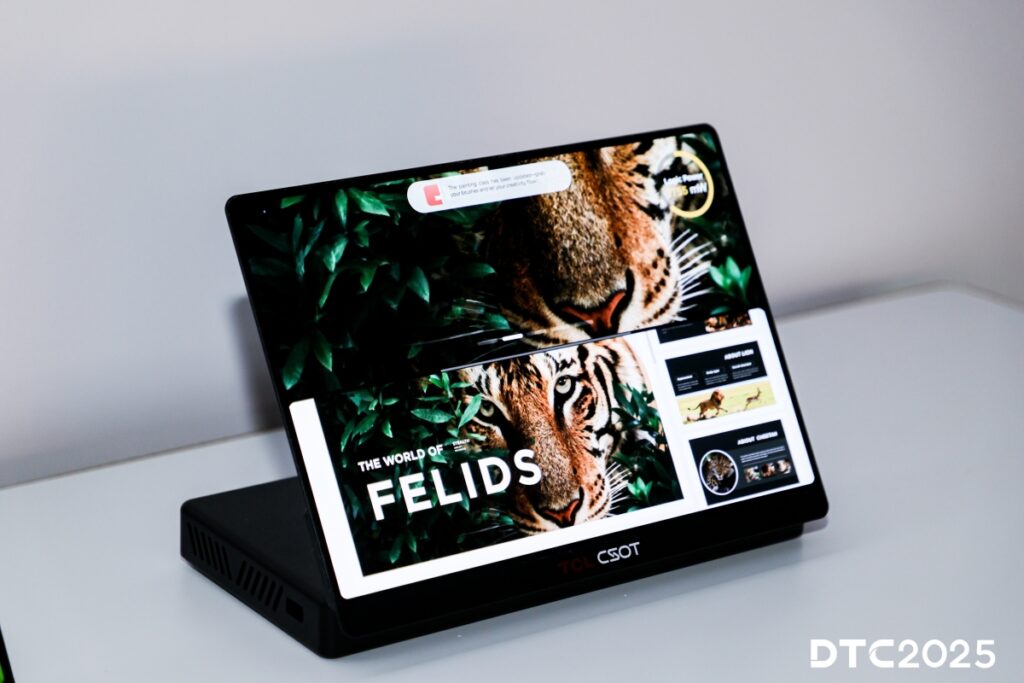
The company also displayed a 6.9-inch OLED panel with natural-light certification and a 6.73-inch folding OLED with ultra-narrow bezels and a 95.96 percent screen-to-body ratio. In notebooks, TCL introduced a 16-inch inkjet-printed OLED gaming panel with 2.5K resolution, a 240Hz refresh rate, and adaptive sync for better energy efficiency.
On the Micro LED front, TCL CSOT revealed a 0.28-inch full-color silicon-based Micro LED panel with 1280×720 resolution and an industry-leading 5131 PPI. The ultra-compact display is geared toward AR and lightweight XR devices, combining high contrast, vivid colors, and low power consumption.
For large-format displays, TCL debuted a 163-inch MLED panel with a contrast ratio of 37,500:1, pixel-level hybrid PWM+PAM driving, and 24-bit color depth. It supports a 144Hz refresh rate and uses ultra-low-reflection materials for clearer visuals. TCL also introduced a 57-inch 8K MLED gaming panel with a 1,000Hz refresh rate, powered by the industry’s fastest 6G2P point-to-point driver IC and its proprietary CSPI 5.1 transmission protocol.

TCL CSOT also unveiled the world’s first tri-fold 28-inch portable OLED display. This foldable panel compresses into a compact 16-inch form factor and expands to 28 inches with a seamless folding mechanism and integrated stand, targeting mobile productivity and immersive entertainment.
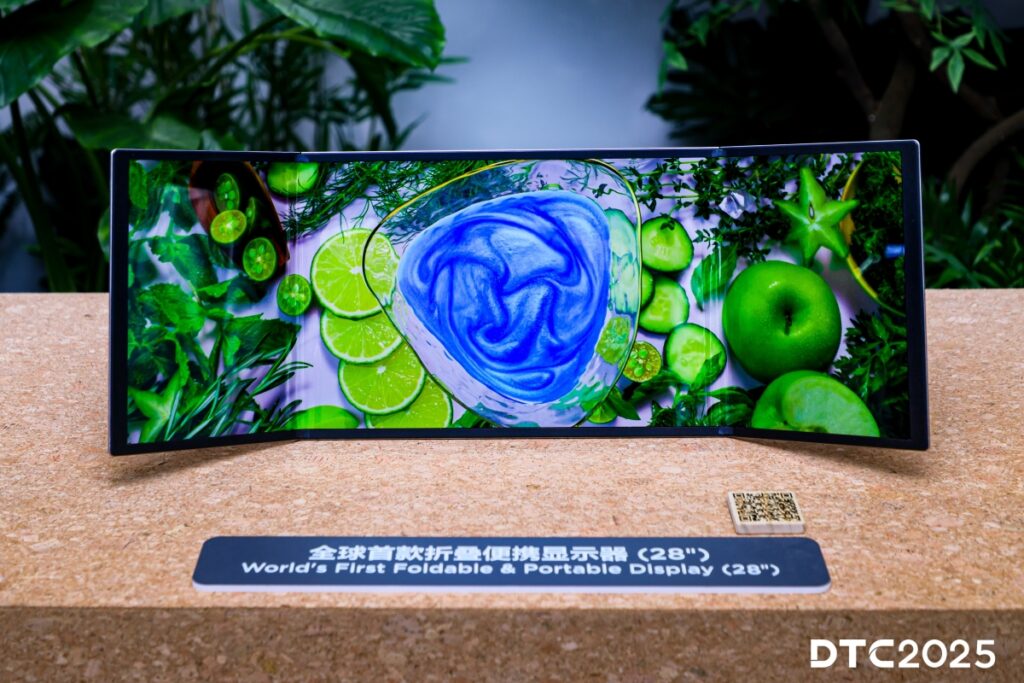
These announcements reflect TCL CSOT’s strategy to lead across all major display categories while integrating AI-driven technologies and sustainable manufacturing to reshape the future of visual hardware.
In related news, TCL topped Double 11 TV sales and strengthened its premium push with SQD Mini LED technology. TCL also unveiled its T7 QLED TVs with 4K resolution, a 144Hz refresh rate, and Google TV, starting at $599.99.
News
TCL tops Double 11 TV sales, strengthens premium leadership with SQD-Mini LED technology

TCL led TV sales across the entire Double 11 shopping cycle in China, securing the top position and demonstrating strong brand momentum. The company achieved significant growth during the sales period, backed by its vertically integrated manufacturing and continuous investment in display technologies.
TCL’s performance highlights its ability to address diverse market demands through a complete supply chain that spans panels, modules, and finished units. This end-to-end control allows the company to fine-tune picture quality, performance, and reliability, ensuring consistent product standards and faster deployment of new technologies to consumers.
According to market research firm Omdia, TCL ranked among the top two global TV brands by shipment volume from Q1 to Q3 2025. It maintained its lead among Chinese brands, further strengthening its presence in the global premium TV segment.

The key driver of TCL’s success this year is its new SQD-Mini LED technology. Unlike conventional RGB-Mini LED systems that use three chips to create white light, SQD-Mini LED relies on a single chip. This approach improves light efficiency and allows three times more local dimming zones without increasing LED count. The result is significantly higher contrast and peak brightness, which enhances image detail and clarity.
The TCL X11L is the first flagship model to feature SQD-Mini LED technology. It showcases improved contrast, better transparency, and more precise light control, setting a new benchmark in high-end TV performance.
TCL’s leading position throughout the Double 11 period underscores the company’s strong technological foundation and growing consumer trust. The brand continues to drive innovation in home entertainment, reinforcing its role as a key player in the global display industry.
In related news, TCL has introduced its new T7 QLED TVs with 4K resolution, a 144Hz refresh rate, and Google TV, starting at $599.99.
(Via)
News
TCL T7 QLED TVs unveiled with 4K, 144Hz refresh & Google TV, starting at $599.99
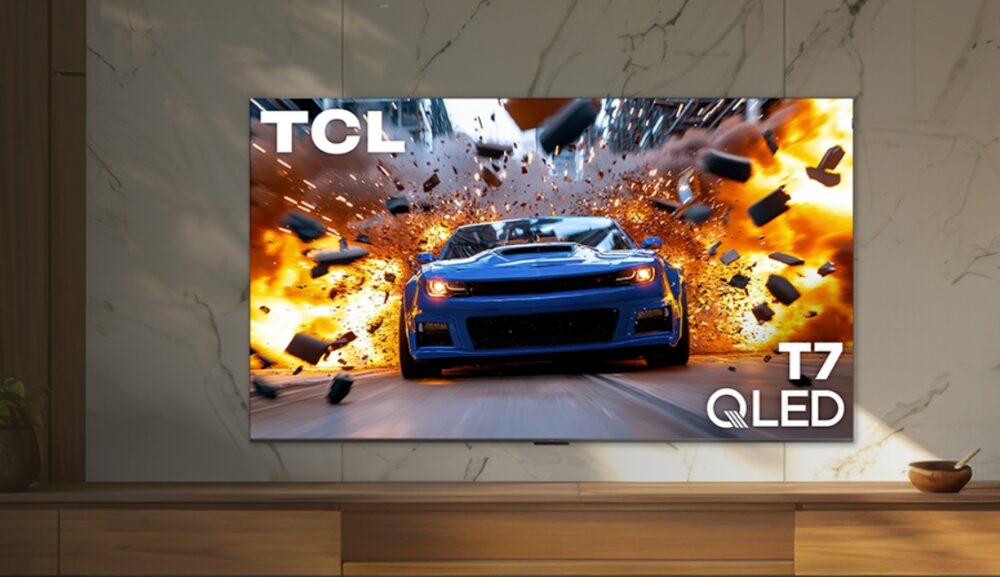
TCL is expanding its 2025 Google TV lineup with the new T7 Series, a range of 4K QLED TVs that promise high refresh rates, rich visuals, and strong gaming credentials without breaking the bank. Announced as a more affordable alternative to its high-end QD-Mini LED sets, the TCL T7 QLED TVs slot neatly into the mid-tier with plenty of premium touches.
TCL T7 4K QLED TV Specifications
The T7 Series is available in four sizes: 55, 65, 75, and 85 inches. While the 55-inch model sticks to a 120Hz native refresh rate, the larger models bump that up to 144Hz, making them suitable for fast-paced gaming and sports. TCL pairs its Quantum Dot panels with the AiPQ Pro processor, which handles real-time color and contrast adjustments for better 4K HDR visuals. Support for HDR10, HDR10+, Dolby Vision, HLG, and Open HDR is standard across the lineup.
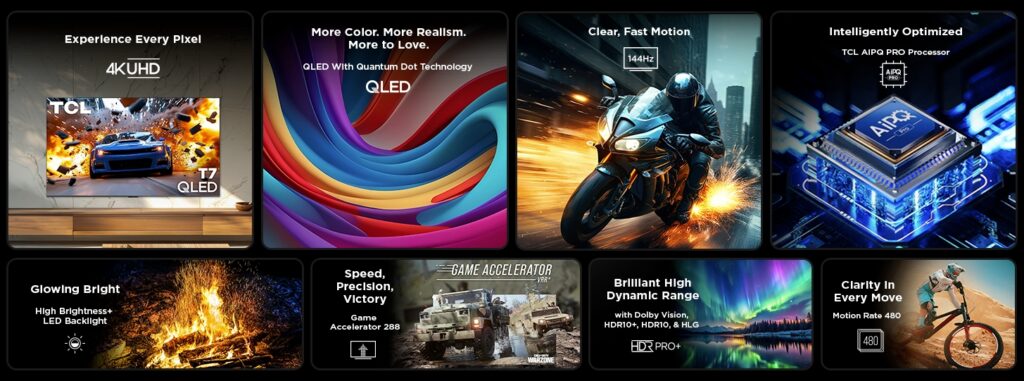
Audio gets a solid upgrade too. All models feature Dolby Atmos and Dolby Digital+ support, with the 85-inch version stepping up to a 2.1-channel Onkyo speaker setup with 40W output. For connectivity, users get four HDMI ports (including eARC), USB 3.0 and 2.0, Ethernet, and Wi-Fi 5. The TVs also support Chromecast, AirPlay 2, and voice assistants like Alexa, Google Assistant, and Apple HomeKit.
Running on Google TV, the T7 Series offers access to thousands of apps, hands-free voice control via far-field mics, and smart home integration. It also supports Apple and Android casting, plus advanced gaming features like Game Accelerator 288 and Auto Low Latency Mode.
Prices start at $599.99 for the 55-inch model and go up to $1,399.99 for the 85-inch. TCL hasn’t confirmed an exact release date yet, but the T7 Series looks positioned to challenge more expensive QLED and Mini LED rivals in 2025.
In related news, we recently explored what makes the RayNeo Air 4 AR glasses stand out.
Featured
What’s So Special About the RayNeo Air 4 AR glasses?

RayNeo has officially launched the Air 4 series in China, bringing major improvements in display, performance, audio, and comfort. The lineup includes the standard Air 4 and the premium Air 4 Pro. While its predecessor, the Air 3s Pro, continues to sell globally, the Air 4 series has just debuted in China and is expected to expand internationally in 2026. Let’s take a closer look at what makes this new generation of AR glasses stand out.
World’s First HDR10 AR Glasses
The RayNeo Air 4 is the first AR glasses product to support HDR10, setting a new benchmark for display technology in the category. The glasses include AI-powered SDR-to-HDR conversion, which upgrades non-HDR content to HDR quality on the fly. This enhancement improves contrast, deepens blacks, and boosts color depth without user intervention. The 1200-nit peak brightness ensures clarity even in well-lit environments.
Vision 4000 Display Processor
Both the Air 4 and Air 4 Pro use the Vision 4000 image-processing chip, co-developed by RayNeo and Pixelworks. The chip handles real-time tone mapping, white balance adjustment, and contrast enhancement. The Air 4 Pro supports 10-bit color output, delivering 10.7 billion colors, which results in a 64x improvement in tonal depth over standard 8-bit displays. This processing power ensures that image quality remains consistent across varied content and lighting conditions.

Micro-OLED Display and 3D Support
The glasses use 0.6-inch dual-layer Micro-OLED panels with support for 1920×1080 resolution in 2D and 3840×1080 in 3D mode. They simulate a 135-inch virtual screen viewed from 4 meters, suitable for streaming, gaming, or multitasking. With a 200,000:1 contrast ratio and 98% DCI-P3 color coverage, the display produces rich blacks, vibrant highlights, and accurate tones. The 120Hz refresh rate supports fluid motion during gameplay and high-frame-rate video.
TCL Optical Engine
RayNeo integrates TCL’s second-generation Peacock Optical Engine 2.0 across both models. The optics system benefits from TCL’s display calibration expertise and pushes color coverage up to 145% sRGB. The engine supports precise color tuning that meets the needs of video professionals and content creators. Visuals remain accurate, natural, and free from color drift, even in high-contrast scenes.

Bang & Olufsen Audio
The Air 4 series introduces a four-speaker audio system co-engineered with Bang & Olufsen. It supports spatial 3D surround sound, uses large polymer diaphragms, and employs a proprietary DAC algorithm to maintain clarity and balance. The sound-guiding fins reduce leakage by up to 80%. Whisper Mode focuses sound into the ears, ideal for quiet environments. The Air 4 Pro adds Surround Mode, expanding the soundstage for immersive content.
Comfort and Fit
RayNeo maintains a lightweight design at 76 grams across both models. The frame uses a balanced 46.7:53.3 front-to-back weight ratio to reduce strain on the nose and ears. The temples offer nine levels of adjustment, while the nose pads include three positioning levels, allowing the headset to fit a wide range of face shapes. Prescription lens support adds flexibility for nearsighted users.
Compatibility and Charging
The Air 4 series connects to smartphones, tablets, laptops, and gaming consoles, including the upcoming Nintendo Switch 2, using USB-C or HDMI adapters. The glasses support up to 100W Power Delivery passthrough charging, allowing users to continue viewing or gaming while their device charges in the background. This makes them suitable for long usage sessions without power interruptions.
Buy RayNeo Air 3s Pro From Official Website
In related news, global TV shipments fell below 50 million units in Q3 2025, marking a 4.9% year-over-year decline, and Redmi’s product manager stated that RGB OLED represents the future of display technology.

